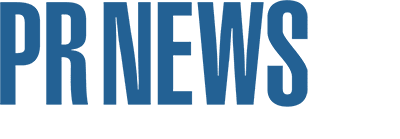
The work of bad actors is no longer a curiosity for journalists and communication leaders. This toxic brew of security, public health and privacy risks demand the development of a discipline within PR and better models for journalism.
Here are trends and ideas that I shared during a keynote for The National Press Foundation to bolster this point.
Trust is Evolving, not Decreasing – It is only partially correct to state that trust is plummeting for businesses or government or other institutions. Trust is simultaneously increasing for social media influencers. The majority of the world receives information via social channels and search.
With attention spans of just 1-3 seconds, we become fixated on certain people within certain channels, leading to an Instagram, YouTube or TikTok influencer having more weight in our minds than a traditional media outlet. We develop trust with those whom we interact with daily.
Disinformation is a Highly Disciplined Effort – It’s time to stop thinking disinformation is someone else’s problem. It is increasingly sophisticated. In fact, we like to say the best disinformation looks like information and takes many forms.
For example, I worry the most about software that can create stories in seconds; it’s 95 percent accurate and a bad actor just changes one quote or fact. If you want to disinform an audience for the long-term, this is a great way to do it.
Censorship Occurs Every Day – Every algorithm has a human behind it. Humans have organizations behind them. Sometimes that organization has a country beyond it. The result is censorship is occurring in ways we don’t appreciate.
For example, imagine that you criticize an approach government X is taking. Soon after, your content is suppressed by the platform’s algorithm and your videos shift from an average of 10,000 views to 1,000 views. You’ve been shadow banned. If caught, the platform will surely say oops, we didn’t realize it. This is just one technique most of us are not fully aware of.
Organized Crime is Rampant Online – Ransomware is a business. Counterfeit products and services are a business. Illegal drugs and human trafficking are a business. Organized crime loves the digital world and invests time and resource to figure out how to expose every weakness we exhibit online.
We have an obligation to protect our companies, the brands we provide to our customers and the citizens we ultimately serve.
So, what can we do?
Journalists need to get out of the newsroom and into the social room. The number one reason why social media influencers succeed is that they personalize the content they deliver. Imagine if a journalist delivered her content directly into Facebook, YouTube, or Instagram every day. We would bond with her.
The majority of the world views traditional media as too impersonal, unfortunately. Build the bond everyday person to person. One to many.
We need to rethink listening platforms. Platforms that tell us all the wonderful things we are doing are nice to have. Intelligence platforms are next. New ones will outline how ransomware gangs are working, which trolls and bots are dis-informing us about the Ukraine/Russia war. In addition, they will expose media models of bad actors who are recruiting individuals to their cause, whether it is a white supremacist group or an adversary country.
Intelligence platforms will utilize the 1,9,90 media model in a quite different way.
Let’s use disinformation as an example. We can easily identify the 1 percent creating disinformation. What we are not as good at is figuring out who is helping to move the disinformation, either on purpose or unwittingly, to reach a wider audience.
And, to reach the majority of us, the passive 90 percent who utilize search or social to learn, we must become fluent in how to decrease disinformation's influence on search.
Today’s leader must understand search engine optimization and the 1,9,90 model if they hope to understand and slow the spread of disinformation.
We need to stop being embarrassed about being hacked. The main leverage ransomware gangs have is that our companies don’t want public awareness of a breach. If we all talked openly about this problem, their leverage would greatly decrease, their prices would drop, and they would have to find new ways to hassle us.
We need to consider utilizing 'technology for good' as a new social purpose model. What if we applied our intellect to protecting our citizens, communities, companies and countries? It would make a major difference and it is quantifiable.
Last, we end with a warning for those who stretch moral boundaries and a reminder that we will find those who try to take advantage of our digital world.
Think of it this way. If we can figure out who in St. Petersburg, Russia, is part of a certain ransomware gang, we’re fairly sure we can find you if you are choosing to disinform here in the U.S.
Having a strong ethical center is more important than ever. Detecting and publicly discussing those who censor matters. Exposing those who disinform and showing how they do it matters. And on the positive side, learning from those who succeed in digital media and then adopting their playbook matters.
Seth Godin once said “the job isn’t to catch up to the status quo. The job is to invent the status quo.”
Well said. Let’s make it happen.
Bob Pearson is CEO, The Bliss Group, and chair, The Next Practices Group
